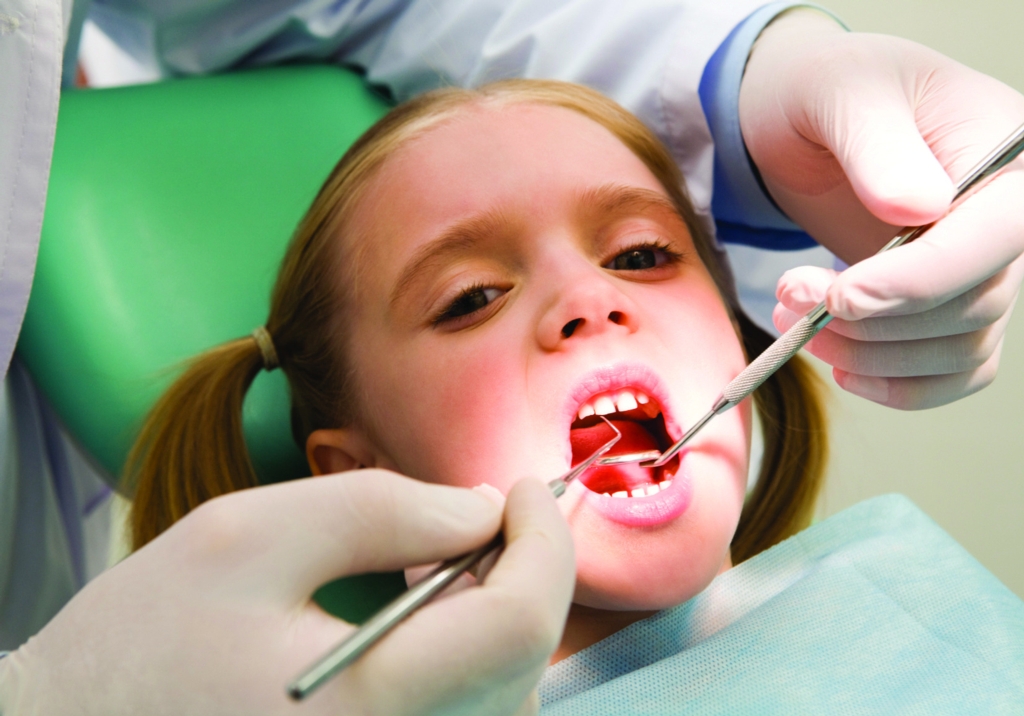Advice to Sink Your Teeth Into!
So your kids are having a great time playing until someone falls and bumps their mouth. The tears start and you need to know what to do. Mouth traumas, including injuries involving the front teeth, are very common. Fortunately, there are many different types of treatment available to preserve your child’s smile.

After you comfort your child and get a handle on where they are hurt, the next step is to call your dentist. He or she will help you determine what kind of treatment your child needs. The doctor will want to know if the teeth feel loose or shifted because this signifies trauma to the tissues that hold the teeth in place. For a tooth that is chipped or has a large portion cracked off they may ask you to look and see if the tooth itself looks to be bleeding, which is an exposure of the nerve. In the event a tooth is completely knocked out, they will advise you to try to find it and give you directions for its care.
Limited treatment will be performed to severely injured baby teeth because it is more important to protect the developing permanent teeth hiding underneath them. Tooth buds within the jaw can be injured by direct interference with them or by an infection that can set in after baby tooth trauma. It is important for injured baby teeth to be evaluated and monitored. A traumatized baby tooth that turns grey may be infected and should be evaluated for extraction.
Permanent teeth that have been pushed in or shifted can be repositioned and stabilized to allow them to heal. Depending on how loose they are, a temporary splint may be needed to stabilize the teeth while they heal. A permanent tooth that is knocked out completely should be placed back into the socket as soon as possible. Immediate re-implantation gives the best chance for healing. If you are unable to do this, the tooth can be stored in an appropriate medium for up to 24 hours, either in a commercially available “tooth rescue box” or in your child’s saliva. Do not scrub the tooth clean or allow the tooth surface to dry because the tissue on the root surface is needed intact for the tooth to be successfully replaced. Teeth can be resilient after this type of trauma but will need to be monitored for appropriate healing or development.
Broken teeth usually can be fixed. There are many classifications of fractured teeth that take into account the size of the fracture and location of the break. A small fracture may only require a simple bonding or filling. A broken fragment can also be reattached by bonding it in place. Some large fractures which cause the tooth itself to bleed may require treatment for the tooth nerve as well. In some severe cases, where the root is fractured, the tooth will need to be extracted.
Tooth injuries in children are addressed in a conservative manner. Final treatment is sometimes delayed until the teeth have matured and jaw growth is complete. For example, a broken tooth may be repaired with a bonded tooth colored restoration giving a normal looking result that can serve for many years. A more permanent option when the child matures would be a porcelain veneer or a ceramic crown. Missing teeth or severely injured teeth can be replaced with an implant but only when growth is complete.
Front tooth trauma is a common injury and appropriate first aid is important to save a beautiful smile. Understanding the types of trauma, what to do, and treatment options, can help parents seek the proper care for their children.

Suzanne Reinhardt, DMD, has helped many patients repair their smiles at Prosthodontics of Princeton located in Princeton, NJ. She is a dental specialist who focuses on the esthetic restoration and replacement of teeth. She and her experienced staff are ready to help you improve yours. Learn more about her practice at www.prosthodonticsofprinceton.com or call 609. 924.1975.

















